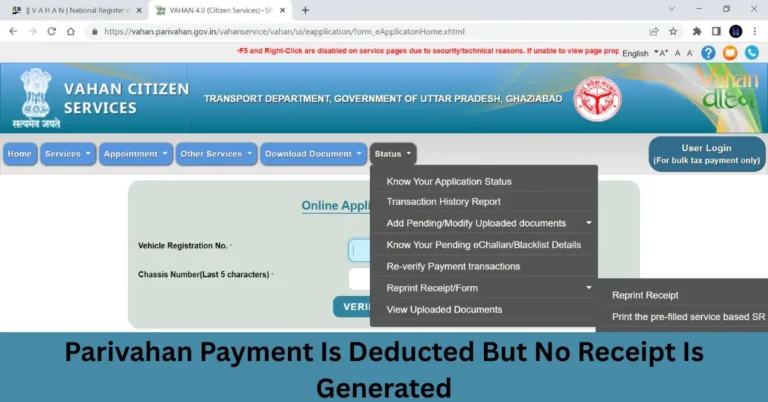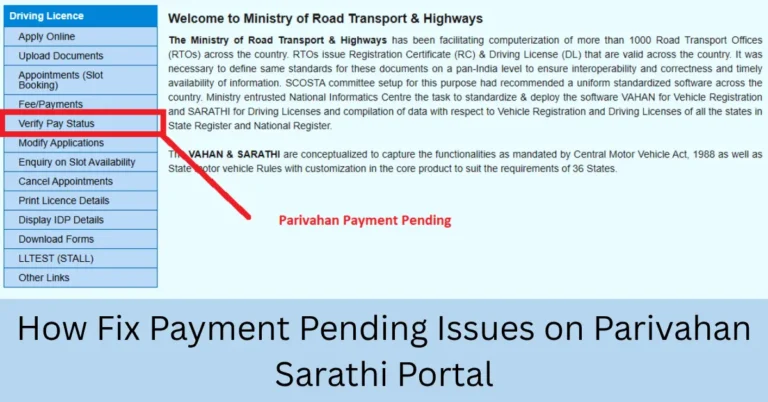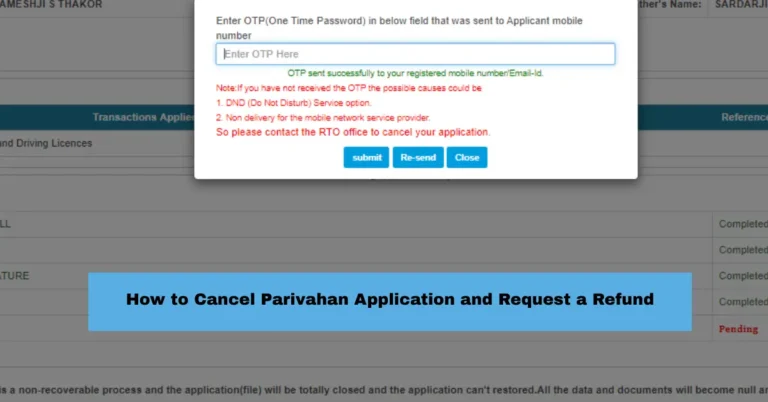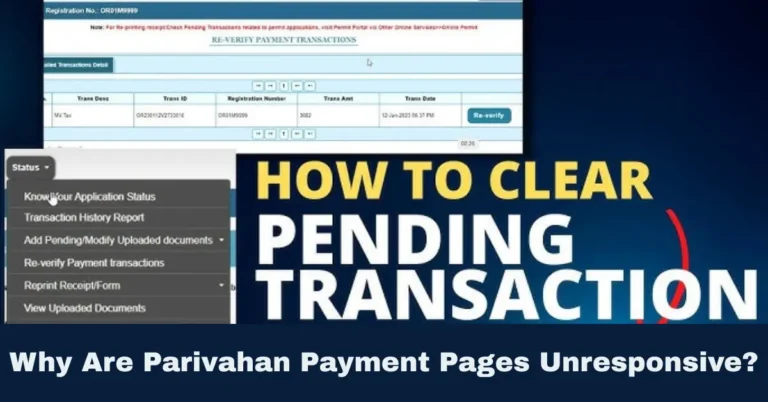Why State-Specific Features on Parivahan Sarathi Differ
The Parivahan Sarathi portal plays a vital role in India’s road transport services, offering various online facilities such as applying for driving licenses, vehicle registration, and other transport-related services. While the portal provides a unified system for all states, state-specific variations can make navigating the platform a bit confusing. This article will explain why these state-specific differences exist, how to navigate them, and tips to make your experience more efficient.
Why Do State-Specific Features Exist?
Diverse Regional Regulations
One of the primary reasons for state-specific features is the difference in transportation laws and regulations across India. Every state has its own set of rules based on local needs and conditions. For example:
- Driving License Requirements: The eligibility criteria, age limits, and mandatory documents can vary from state to state. Some states may require additional forms of identification or verification.
- Traffic Rules: Specific traffic regulations are tailored to local issues, such as stricter rules for driving in cities versus rural areas.
- How to Get Real-Time Support for Issues on Parivahan Sarathi
These differences necessitate customizations in the online portal to ensure compliance with each state’s rules and regulations.
Local Infrastructure and Resources
Infrastructure and technological capabilities differ from state to state. Some states are equipped with advanced technologies for handling transport-related services, while others may not have the same level of digital integration. For example:
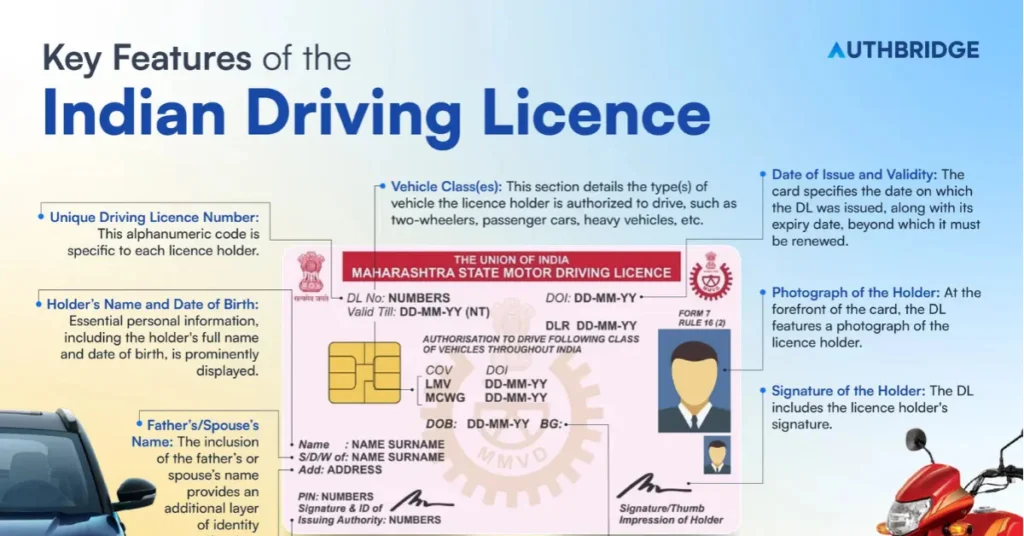
- Biometric Data Collection: Some states may offer biometric data collection for new license applications, while others may not.
- Online Services: Certain states may offer online learner’s license tests or remote vehicle inspections, whereas other states might still rely on in-person processes.
To address these disparities, the Parivahan Sarathi portal allows each state to integrate specific features suited to its available resources.
State-Specific Customization for Services
The Parivahan Sarathi portal gives each state the flexibility to customize and add specific features. This allows states to:
- Optimize User Experience: Tailoring the portal based on local demand and specific services helps ensure a better user experience.
- Address Regional Needs: Each state can design unique workflows, services, and processes that align with its local population and geographical constraints.
As a result, the portal might offer additional features or restrictions depending on the state’s needs.
How to Navigate State-Specific Features
Select Your State
Upon entering the Parivahan Sarathi portal, you’ll be prompted to select your state. This is the first step in ensuring that the services available to you align with your state’s regulations and available features.
- How to Choose Your State: On the homepage of the portal, look for a dropdown menu or a map where you can select your specific state. Once you select it, the platform will adjust to display only the services that are available in your region.
- Tip: Always make sure you’re on the correct state page to avoid confusion or delays in the application process.
Explore State-Specific Services
Once you’ve selected your state, you’ll be able to explore the services available. These services will vary depending on what your state supports. Some examples of state-specific offerings include:
- Learning License Test: In some states, you may be able to take the learner’s license test online, while in others, you’ll need to go in person.
- Fancy Number Plates: Some states allow you to apply for fancy number plates through the portal, while others may not have this feature.
To make your experience easier, ensure you are aware of the services your state offers. You can find detailed lists and features for each service under the “Driving License” and “Vehicle Registration” sections of the portal.
Check the FAQ Section for Your State
Each state on the Parivahan portal has a state-specific FAQ section. This is an important resource that provides answers to common questions about the services, requirements, and procedures for that particular state.
- FAQs: The FAQ section can help clarify:
- Local document requirements
- Service timelines
- Steps for specific applications
Referring to the state-specific FAQ section will help you avoid errors and ensure you don’t miss important details that are unique to your state.
Utilize the Helpdesk for State-Specific Issues
If you are facing difficulties or need clarification on any state-specific service, contacting the helpdesk can be very helpful. The state-specific helpdesk provides more direct support based on your region’s particular challenges.
- Contact Information: The portal typically provides phone numbers and emails for each state’s helpdesk. For urgent issues, reaching out through these channels can provide more detailed and localized support.
- Tip: When contacting the helpdesk, mention your specific state and the issue you are facing to get quicker assistance.
Review Service Availability and Processing Time
Because each state has different infrastructures and workload volumes, the time it takes to process applications may differ. For example:
- Processing Time: Some states may process applications faster due to better infrastructure, while others may take longer due to manual verification processes.
- Service Availability: Certain services, like online appointments or document uploads, might be available in one state but not in another.
If you’re unsure about the processing times, always check the state’s specific section for estimated timeframes.
Common State-Specific Variations
1. Document Requirements
Documents required for applications might differ between states. For instance, states like Karnataka or Maharashtra might require additional proof of residence or identity verification documents, while others may not.
- What to Do: Check your state’s section on the Parivahan portal for the exact document list needed. Make sure you upload all the required documents to avoid delays.
2. Service Availability
Not all features are available in every state. For example, some states may not offer services like:
- Online Driving Tests
- Online Vehicle Fitness Tests
3. Fee Structures
Each state sets its own fee for transport services, which means you may find that the cost for services like renewing your license or registering your vehicle varies across different states.
- Tip: Always verify the fees before proceeding with any service request to avoid unexpected costs.
4. Processing Time
The time taken for application processing, document verification, and license issuance can vary depending on the workload of the respective state’s RTO. States with more automated systems may process applications more quickly, while others may experience delays.
Tips for a Smooth Experience on Parivahan Sarathi
1. Check Local Policies and Services Regularly
Because transport policies can change from state to state, it’s important to regularly check the Parivahan Sarathi portal for updates about services or policies in your region.
2. Verify Your Documents
To prevent delays or issues, always make sure your documents are up-to-date and match the requirements of your state.
3. Use Off-Peak Hours for Processing
Try accessing the portal during off-peak hours, such as early mornings or late evenings, to avoid heavy traffic on the site, especially if you’re making a payment or uploading documents.
Frequently Asked Questions (FAQs)
Final Words
Understanding that Parivahan Sarathi offers state-specific features tailored to each region’s unique transport policies and infrastructure is crucial for a smooth user experience. By following the tips outlined above, selecting the correct state, and referring to state-specific FAQs, you can navigate the portal more effectively.
In case of uncertainty, don’t hesitate to consult your state’s helpdesk for personalized assistance. Being aware of the available features, document requirements, and service processing times will not only help you save time but also ensure that your applications are processed without unnecessary delays.



